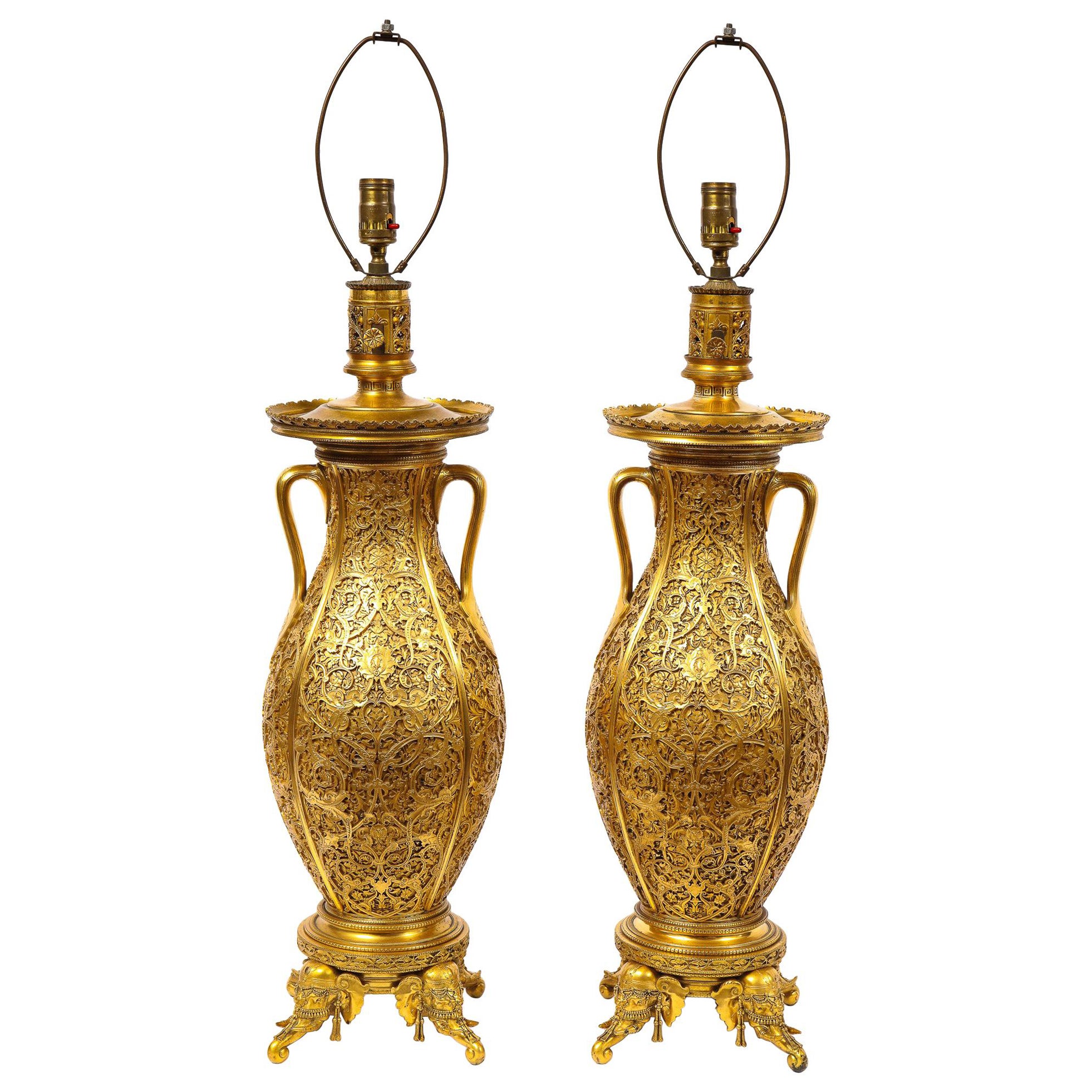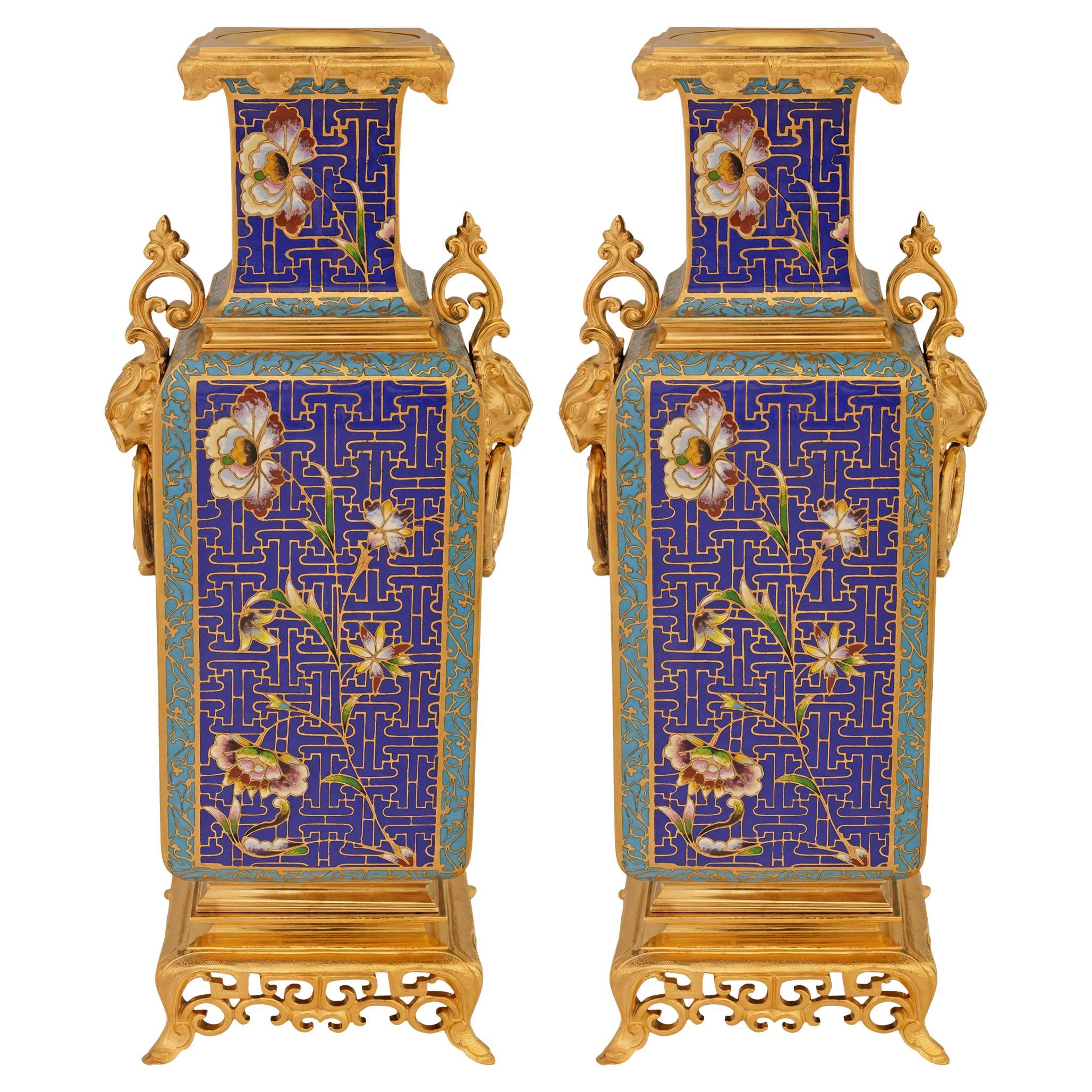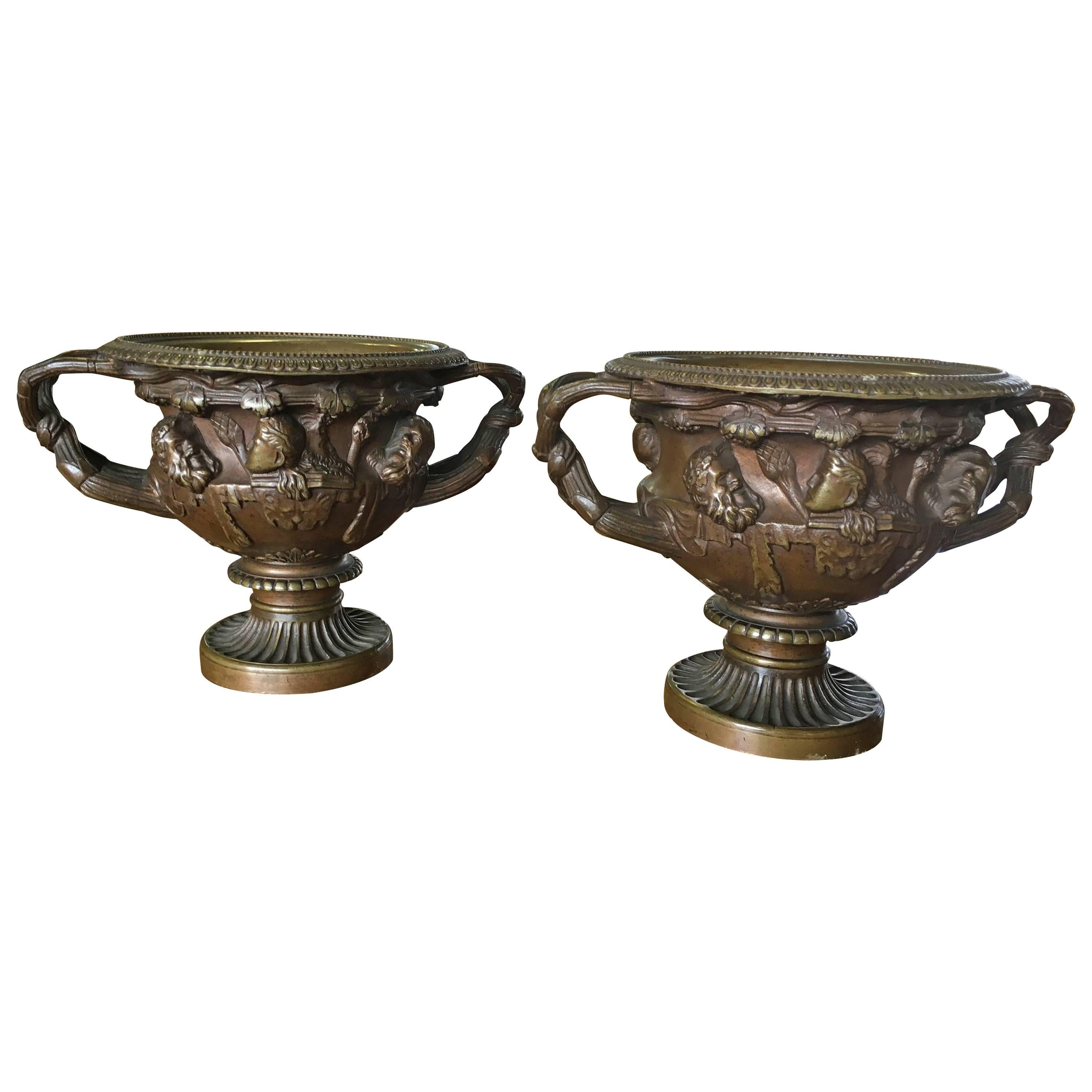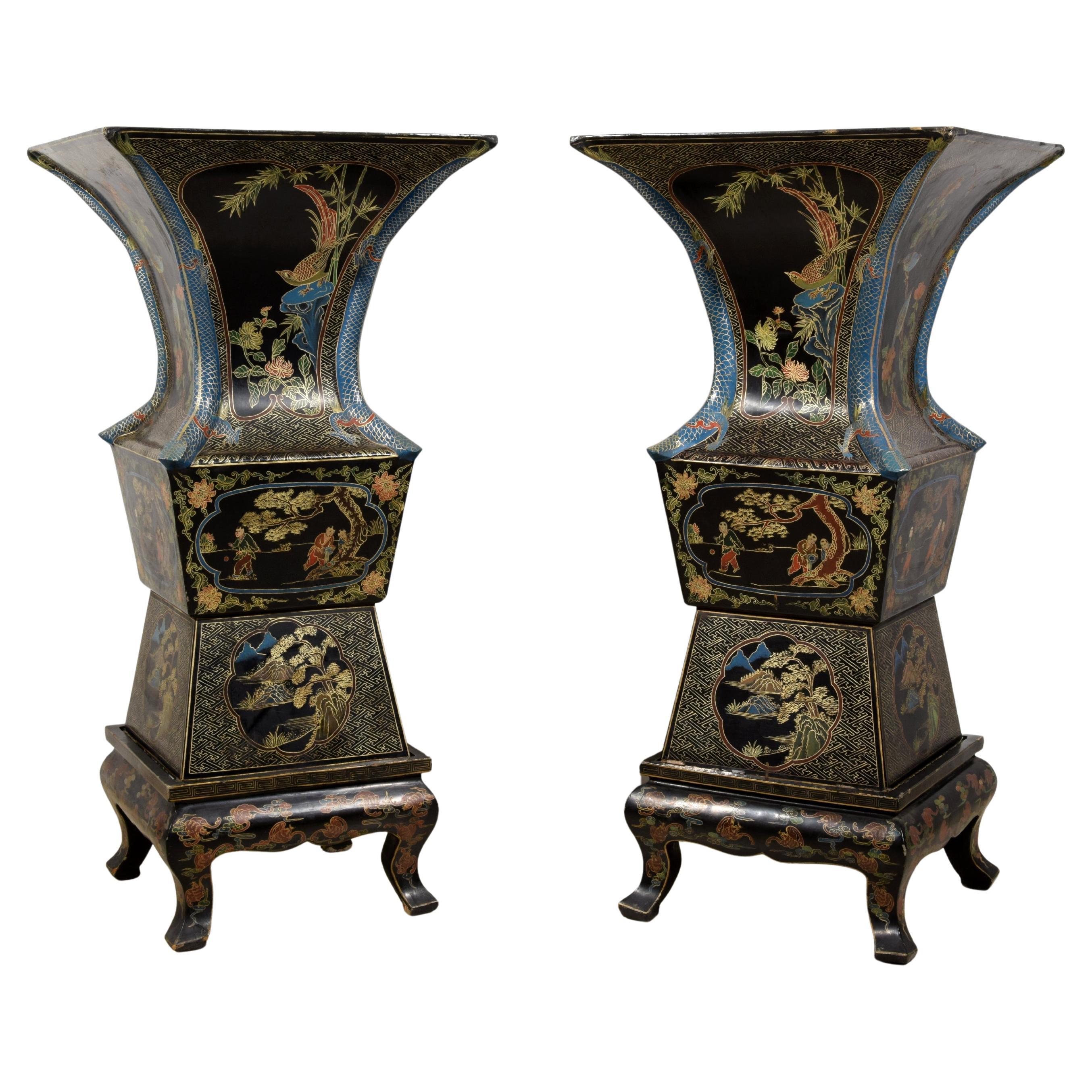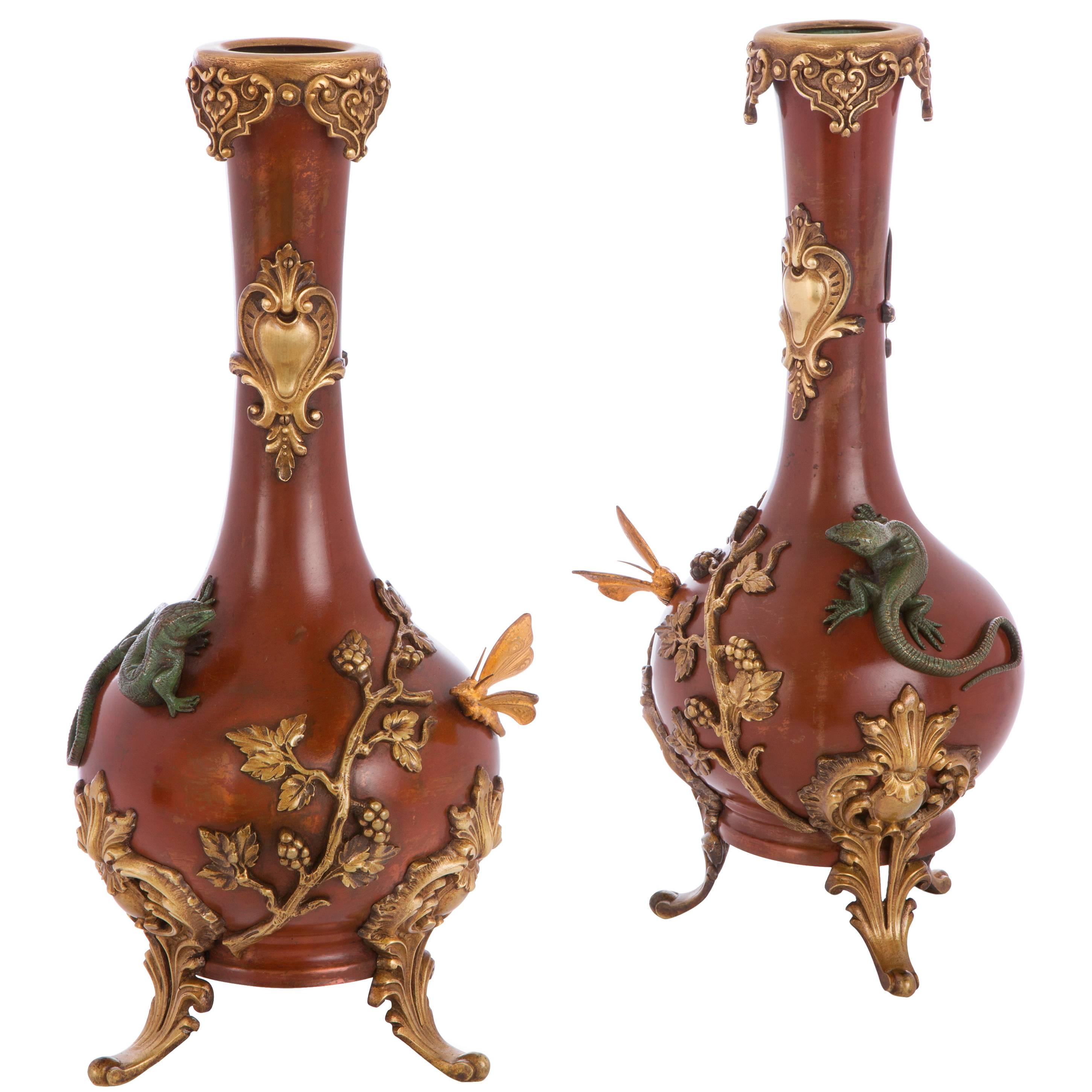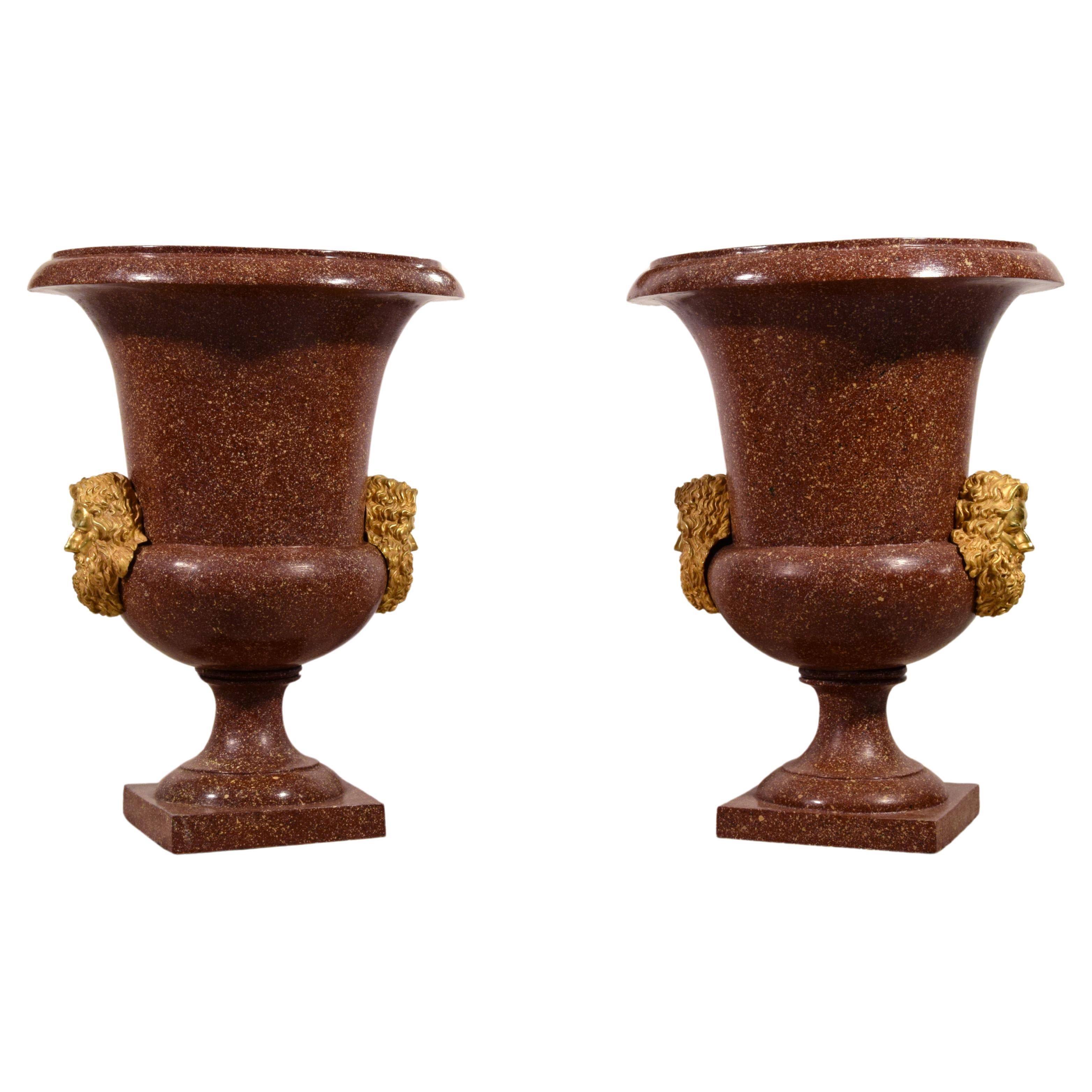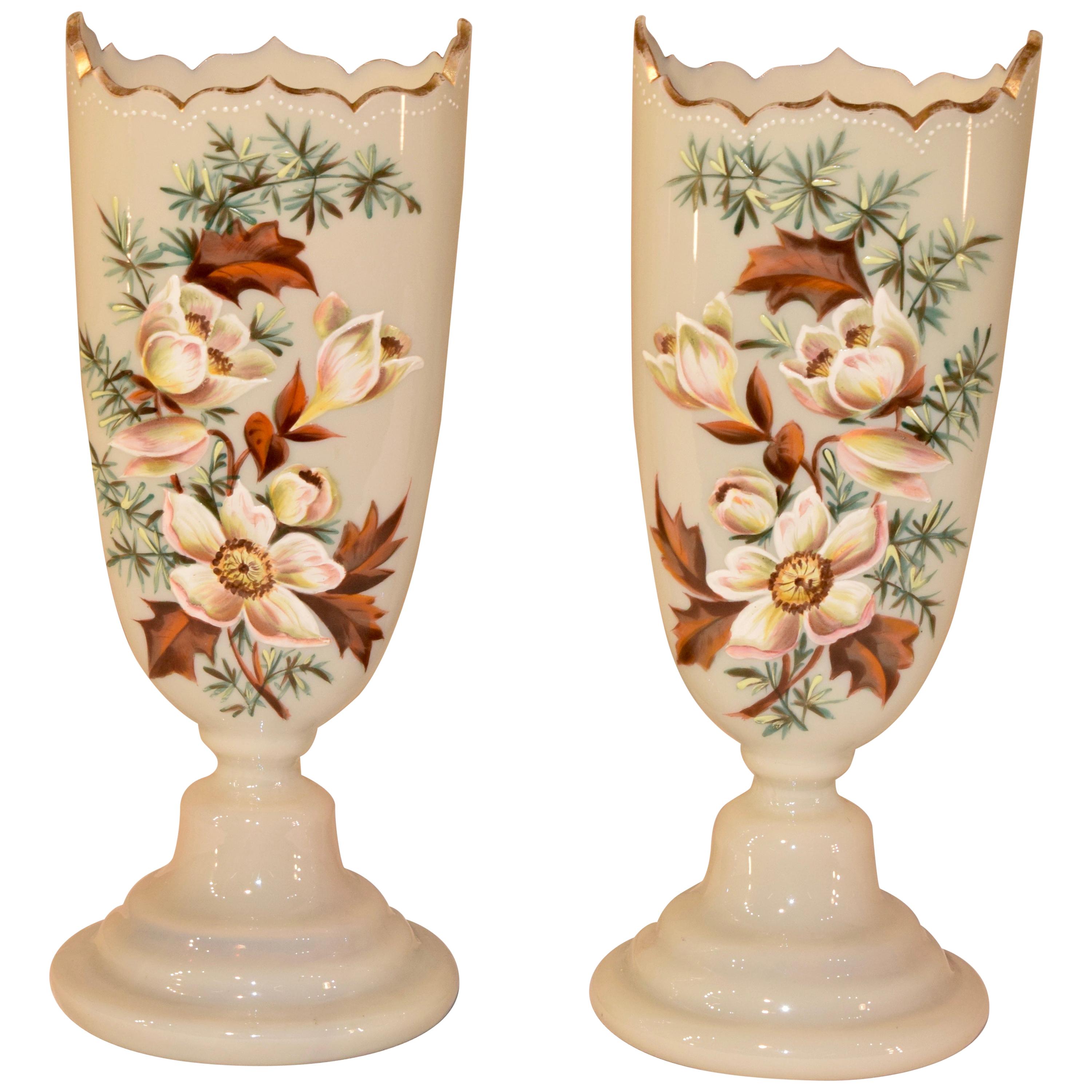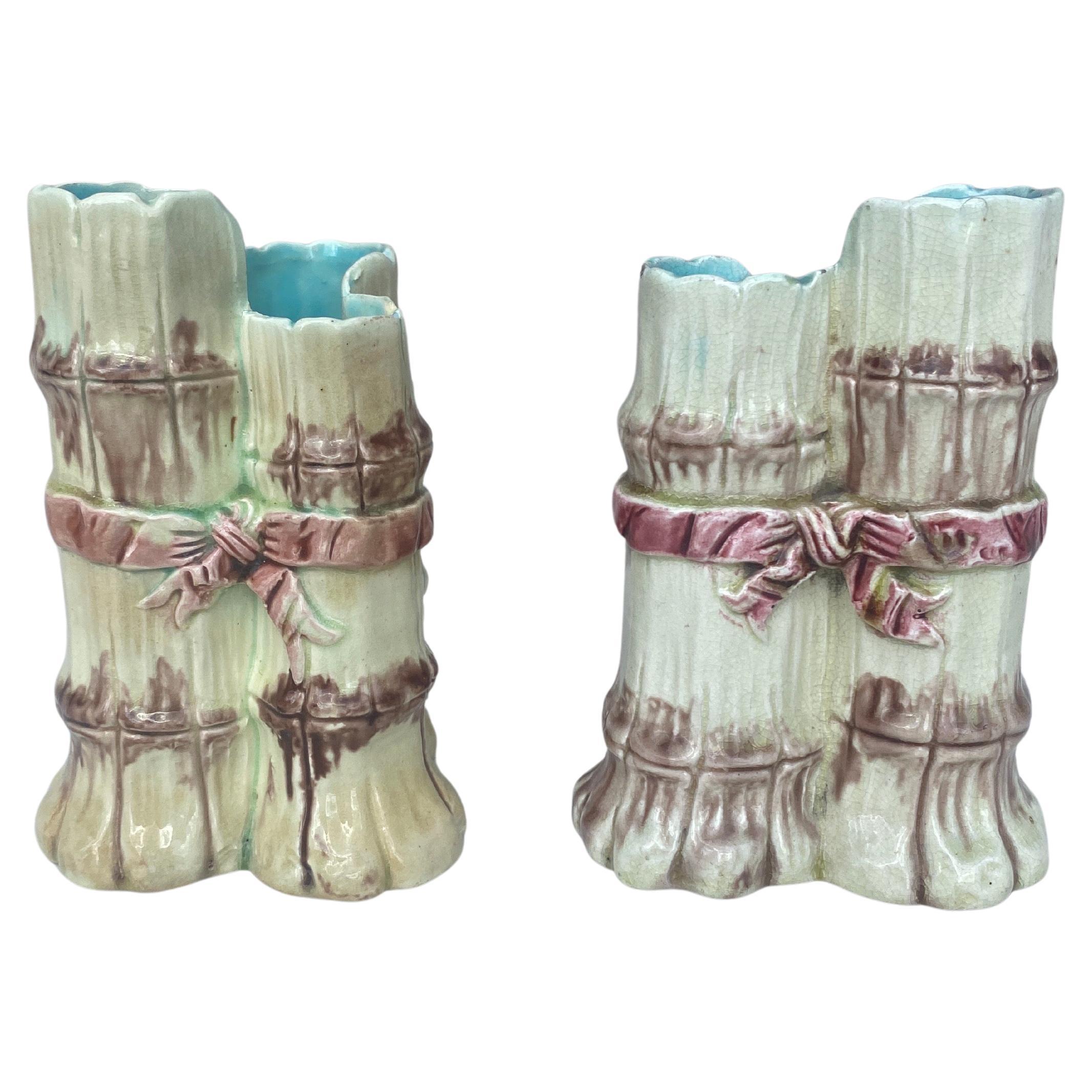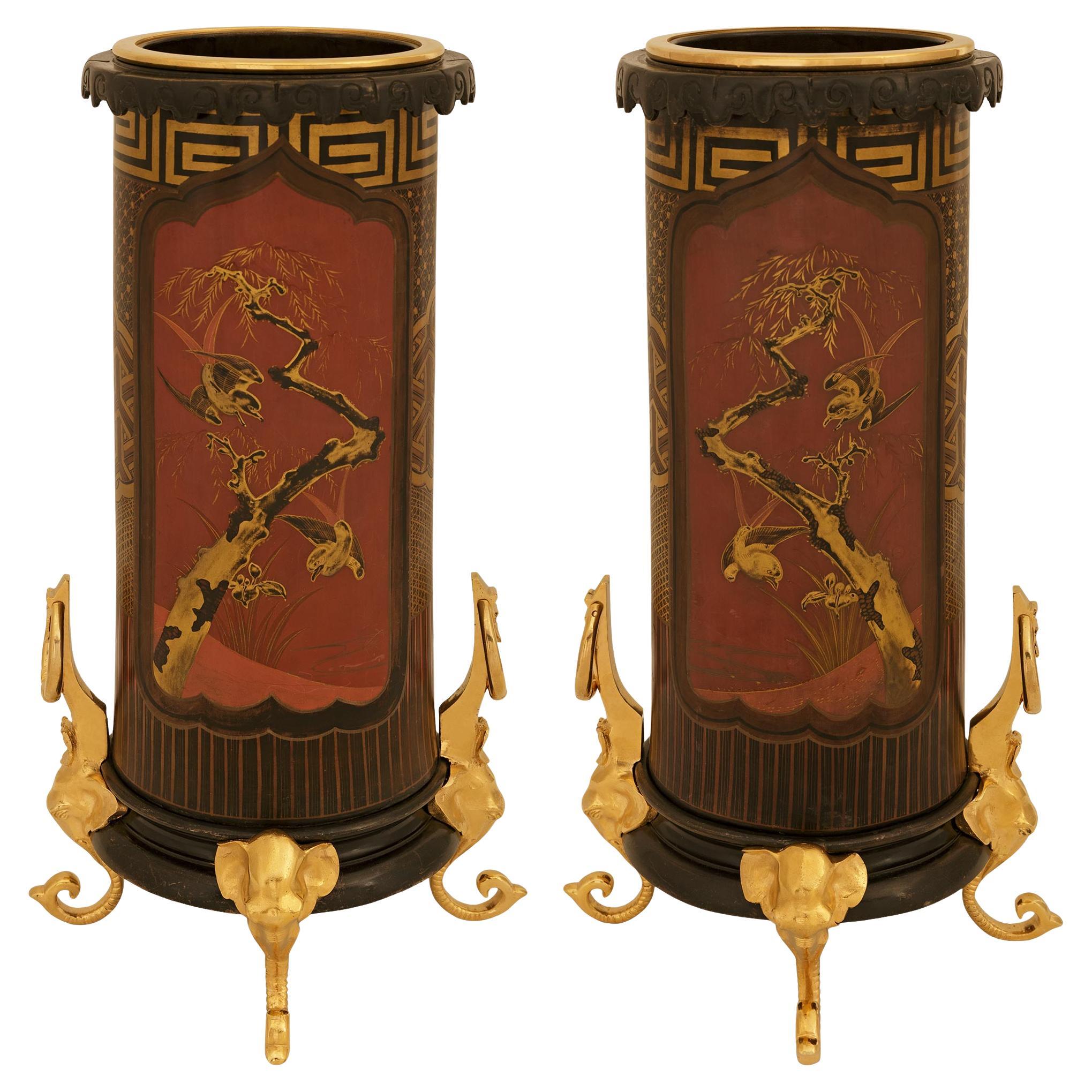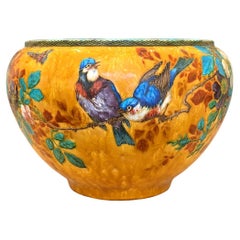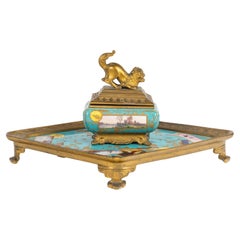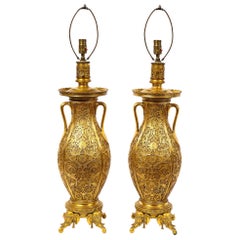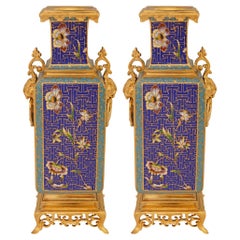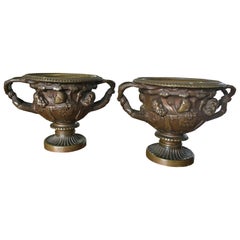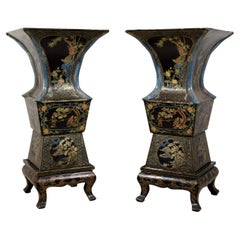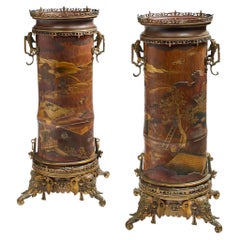
French 19th Century Pair of Lacquered Bamboos Japonisme Vases
View Similar Items
Want more images or videos?
Request additional images or videos from the seller
1 of 21
French 19th Century Pair of Lacquered Bamboos Japonisme Vases
$50,854.06List Priceper set
About the Item
- Attributed to:Ferdinand Barbedienne (Maker)Edouard Lievre (Designer)
- Dimensions:Height: 22.45 in (57 cm)Diameter: 14.57 in (37 cm)
- Sold As:Set of 2
- Style:Japonisme (Of the Period)
- Materials and Techniques:
- Place of Origin:
- Period:
- Date of Manufacture:circa 1875
- Condition:Wear consistent with age and use. few lacks of lacquer.
- Seller Location:Saint-Ouen, FR
- Reference Number:1stDibs: LU2612329778592
About the Seller
4.8
Vetted Professional Seller
Every seller passes strict standards for authenticity and reliability
1stDibs seller since 2017
67 sales on 1stDibs
Authenticity Guarantee
In the unlikely event there’s an issue with an item’s authenticity, contact us within 1 year for a full refund. DetailsMoney-Back Guarantee
If your item is not as described, is damaged in transit, or does not arrive, contact us within 7 days for a full refund. Details24-Hour Cancellation
You have a 24-hour grace period in which to reconsider your purchase, with no questions asked.Vetted Professional Sellers
Our world-class sellers must adhere to strict standards for service and quality, maintaining the integrity of our listings.Price-Match Guarantee
If you find that a seller listed the same item for a lower price elsewhere, we’ll match it.Trusted Global Delivery
Our best-in-class carrier network provides specialized shipping options worldwide, including custom delivery.More From This Seller
View AllFrench Japonisme Lacquered Metal Jardinière on Ormolu Stand Signed Marnyhac
By Maison Marnyhac 1, Edouard Lievre
Located in Saint-Ouen, FR
Jardinière Médicis vase shape in copper with gold lacquered decoration on a burgundy background of a Japanese landscape with a volcano and an eagle ...
Category
Antique 1870s French Japonisme Planters, Cachepots and Jardinières
Materials
Metal, Bronze
$18,400 Sale Price
20% Off
Théodore Deck (1823-1891), A 19th French Japonisme Cache-Pot, circa 1875
By Theodore Deck
Located in Saint-Ouen, FR
Théodore Deck (1823-1891)
A 19th French Japonisme Cache-Pot, circa 1875
A Polychrome Enameled Faience Round-Shaped Cachepot and Jardinière
Hand-painted design in the Japonisme Aesth...
Category
Antique 1870s French Japonisme Planters, Cachepots and Jardinières
Materials
Faience
A French 19th Century Pot-Pourri Covered Vase
Located in Saint-Ouen, FR
A French 19th Century Pot-Pourri Covered Vase
Large pot-pourri covered and ormolu-mounted ceramic vase
Resting on an ormolu base simulating a perfume burner with posts in claws.
L...
Category
Antique 1860s French Louis XVI Vases
Materials
Ormolu
$3,610 Sale Price
33% Off
19th Century French Japonisme Inkwell attributed to L'Escalier de Cristal
By L'Escalier de Cristal
Located in Saint-Ouen, FR
A very nice quality French Japonisme Style inkwell
Attributed to l'Escalier de Cristal, circa 1880
Resting on a diamond-shaped polychromed hand-painted porcelain tray representing l...
Category
Antique Late 19th Century French Japonisme Inkwells
Materials
Ormolu
19th Century French Lacquered Wood Chandelier
Located in Saint-Ouen, FR
A 19th century French polychromed lacquered wood eight-light chandelier
Lacquered gloss cream wood with green, red and brown highlights
Contained vase ending in foliated seed welcoming eight arms forming semicircles.
The top has a frieze of red flowers in green interlacing and is topped with leaves and a painted egg cream...
Category
Antique 1890s French Louis XVI Chandeliers and Pendants
Materials
Wood
$5,867 Sale Price
35% Off
Japonisme Ormolu-Mounted Opaline Jardiniere by Maison Baccarat, circa 1865
By Baccarat
Located in Saint-Ouen, FR
Japonisme Ormolu-Mounted Opaline Jardiniere by Maison Baccarat, circa 1865
A French Japonisme rectangular shape with double lobed corners Jardiniere
White Opaline glass with gold han...
Category
Antique 1860s French Japonisme Planters, Cachepots and Jardinières
Materials
Ormolu
$3,009 Sale Price
34% Off
You May Also Like
Pair of French Japonisme Ormolu Vases E. Lièvre, Executed by F. Barbedienne
By Edouard Lievre, Ferdinand Barbedienne
Located in New York, NY
An important and monumental pair of very fine 19th century French Japonisme/Orientalist ormolu vases designed by Edouard Lièvre and Executed by Ferdinand Barbedienne. Each body with an oval shape, finely sculpted in a floral design, fringed by orientalist style handles with cartouches, the neck surmounted by a circular pierced scrolling dragon frieze. Each vase resting on a group of four orientalist style jeweled elephant...
Category
Antique 1870s French Japonisme Vases
Materials
Bronze
pair of French 19th century Japonisme st. Cloisonné and Ormolu vases
Located in West Palm Beach, FL
A charming and high quality pair of French 19th century Japonisme st. Cloisonné and Ormolu vases. Each stunning vase is raised by a square pierced Ormolu base supporting the sumptuou...
Category
Antique 19th Century French Japonisme Vases
Materials
Enamel, Ormolu
19th Century Pair of French Bronze Vases by F. Barbedienne
By Ferdinand Barbedienne
Located in Sofia, BG
A wonderful pair of bronze vases with high relief by Bardedienne.
France, circa 1870.
Category
Antique Late 19th Century French Vases
Materials
Bronze
$4,736 Sale Price / set
50% Off
19th Century, Pair of Large Oriental Lacquered Wooden Vases
Located in IT
Pair of Large Oriental Lacquered Wooden Vases, Late 19th Century
Dimensions: cm H 142 x W 69 x D 69. Base cm 51 x 51
This monumental pair of vases was made in Europe towards the end...
Category
Antique Late 19th Century European Japonisme Vases
Materials
Wood
Pair of Lacquered and Gilt Bronze Antique Japonisme Vases
Located in London, GB
With an Arabesque rim and decorated with lizards, dragonflies and vines.
These unusual vases reflect the European fascination Japan at the turn of the century and delightfully inco...
Category
Early 20th Century French Japonisme Vases
Materials
Bronze
19th Century, Pair of Italian Lacquered Bronze Vases
Located in IT
19th Century, Pair of Italian Lacquered Bronze Vases
Pair of vases in bronze lacquered with fake porphyry with applications in chiseled and gilded bronze, Rome, late nineteenth cent...
Category
Antique Late 19th Century Italian Neoclassical Vases
Materials
Bronze
Recently Viewed
View AllMore Ways To Browse
Steven Correia Glass
Svm Bronze
Swung Vase
Tapio Wirkkala Mushroom
Tarahumara Pot
Tarahumara Pots
Theo And Susan Harlander
Tiffany Bud Vase
Tomas Anagrius
Tornado Vase
Ugo Poggi
Umbra Vase
Vera Pottery
Victorian Tussie Mussie
Vietnam Antique Terracotta
Vintage Hot Water Bottles
Vintage Slag Glass Vase
Wedgewood Greek
